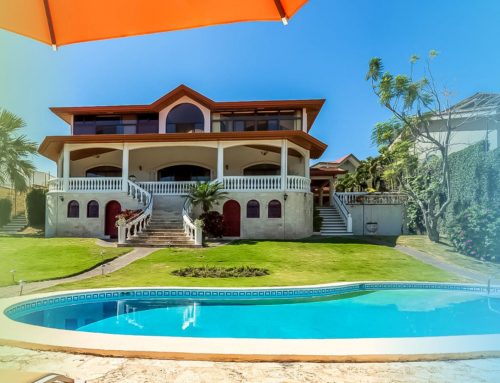In this Nativu Talk, we will learn about real estate metrics and their fundamental applications for those looking to succeed in the real estate market. All of this will be guided by Melizandro Quirós, an economist and executive director of CENFI, who will help us understand the different types of investments. In addition, we will cover concepts such as capital gains, rental income, development, and evaluation approaches like the sales comparison approach and the cost approach.
The 3 Types of Real Estate Businesses
In the real estate market, three fundamental types of businesses encompass everything from acquisition to real estate transformation: capital gains, land banking, and development.
Capital gains focus on strategically buying and selling properties to profit from the property’s value appreciation over time.
Land banking involves acquiring land with an eye on its potential appreciation, without necessarily developing it at the time of purchase.
This approach is based on the expectation that the land’s value will increase due to factors such as urbanization or infrastructure development.
Real estate development involves purchasing land with the intention of building, remodeling, or improving properties for future sale or rental.
Each of these types of real estate businesses requires a deep understanding of its principles, as well as a careful assessment of risks and opportunities in the market.
Calculating the profitability of a rental property
In the context of acquiring a property for rent, it is necessary to calculate the annual profit accurately. This involves subtracting total expenses, such as management fees, maintenance, and condominium fees, from the annual rental income.
Additionally, consider other costs such as property insurance and taxes.
For this process, it is essential to calculate the Net Operating Income (NOI), which is the difference between rental income and operating expenses.
The net profitability, known as the capitalization rate, is determined by dividing the NOI by the purchase price and multiplying by 100. This figure represents the annual return on investment as a percentage.
Additionally, if you are considering buying a more expensive home to increase your rental income, you should calculate the new rental price based on the home’s price and the desired return on investment.
Using an example of a house valued at $120,000 and aiming for an annual profit of $12,000 (which is a 10% annual return), calculate the necessary monthly rent to achieve this goal, taking into account vacancy rates.
Investment Return and Cash Flow
In real estate investments, it’s crucial to calculate both cash flow and return on investment. In most cases, a low return is linked to the purchase price.
Therefore, we recommend seeking high-quality properties at more affordable prices to maximize your returns. When investing in real estate, it is important to carefully consider financing options.
To do this, it is necessary to calculate the monthly net profit to determine how much debt you can take on while maintaining positive cash flow.
Additionally, when evaluating a real estate investment, it is essential to calculate the net rental income and the debt ratio. This way, you can make a smart purchase at an appropriate price and enjoy better cash flow with higher returns.
Understanding the Value of Land and Its Potential
The value of a piece of land can be determined based on its maximum potential price and the cost per square meter. This involves using a formula where the maximum price is divided by the total area to determine the cost per square meter.
For example, if the maximum price of a piece of land is $100,000 and its total area is 1,000 square meters, the cost per square meter would be $100.
We can use the residual approach to calculate the net benefit for the developer and determine the value of the land-based on that figure.
For example, if the projected income from development is $500,000 and the total costs are $400,000, the net benefit would be $100,000.
Understanding land use and the maximum building height for real estate development is also crucial when acquiring land. Municipalities determine the percentage of the area that can be built upon, known as the floor area ratio or building coverage ratio.
For example, if a 1,000-square-meter lot can only have 80% of the area built upon, the owner will have 200 square meters of green space remaining.
Additionally, knowing the maximum building height is necessary to determine how much can be constructed on the land. For instance, if the maximum building area ratio is 4.69 in a specific zone, it means that on a 1,000-square-meter lot, you could build a building of approximately 3,752 square meters.
Understanding metrics for calculating value, knowing the return on investment, and evaluating the development potential of a property are essential for success in the real estate business. Fortunately for you, at Nativu we have a team of expert and local advisors in each of the areas we represent. Don’t hesitate to contact our team for your next investment!








